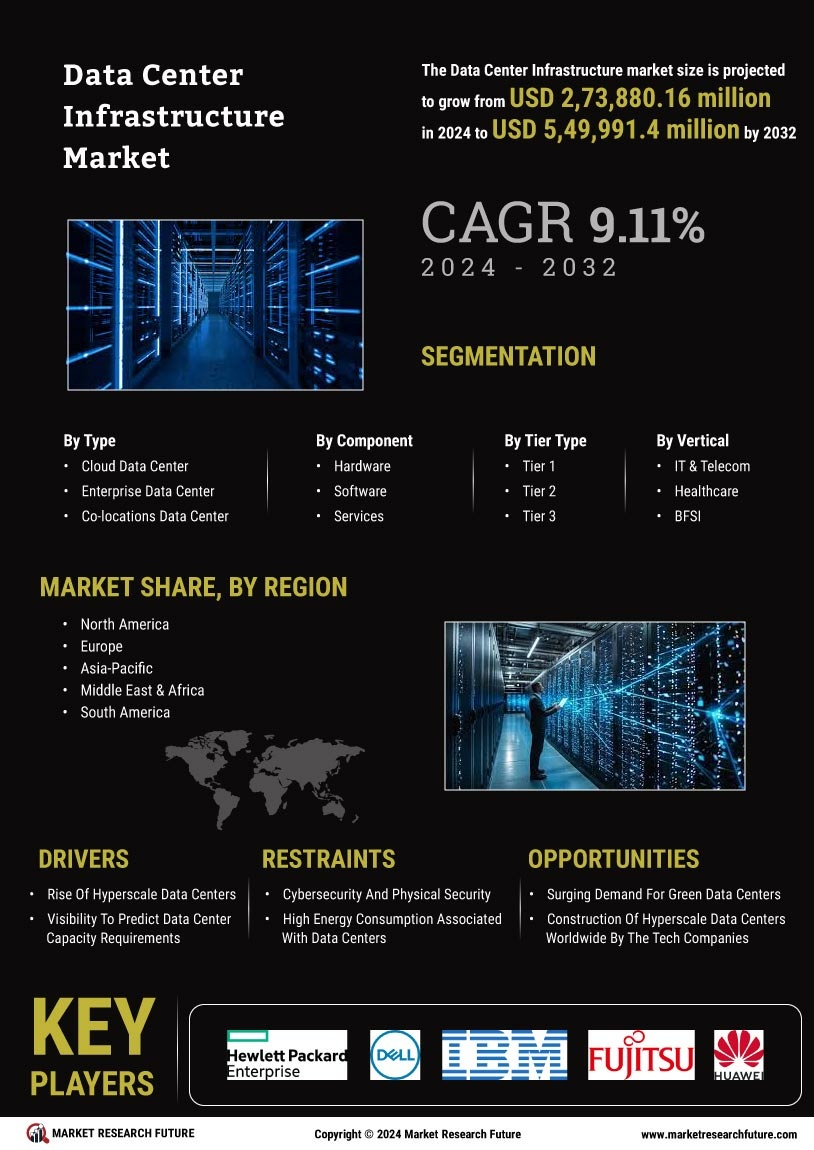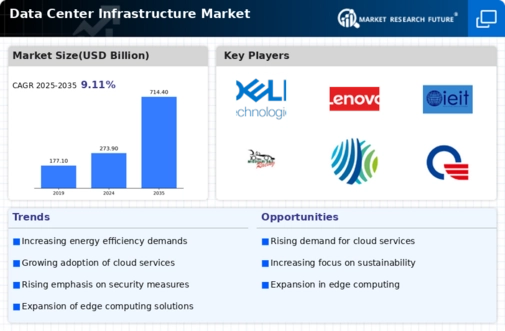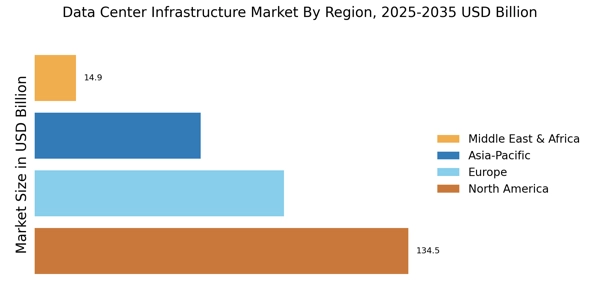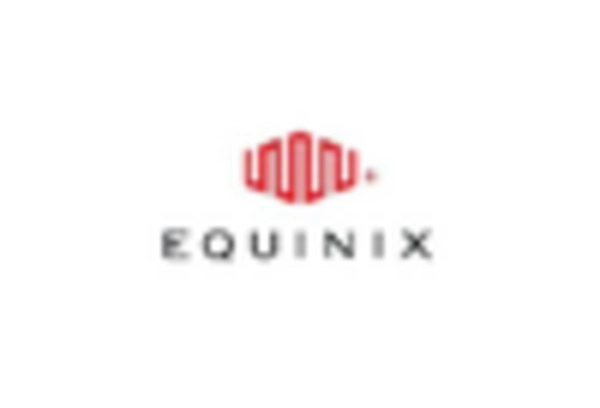Emergence of 5G Technology
The rollout of 5G technology is poised to significantly impact the Data Center Infrastructure Market. With its promise of ultra-fast connectivity and low latency, 5G is expected to drive the demand for data centers that can handle increased data traffic. As more devices become interconnected, the volume of data generated will escalate, necessitating enhanced data processing capabilities. Industry analysts suggest that the 5G rollout could lead to a 30% increase in data center traffic by 2025. This trend compels data center operators to invest in infrastructure upgrades to support the anticipated growth, thereby propelling the market forward.
Increased Focus on Data Security
As cyber threats become more sophisticated, the emphasis on data security is a crucial driver for the Data Center Infrastructure Market. Organizations are increasingly investing in secure infrastructure to protect sensitive information from breaches and attacks. The market is expected to exceed 300 billion dollars by 2025, reflecting the urgency for enhanced security measures. Data centers are now required to implement advanced security protocols, including encryption and multi-factor authentication, to safeguard data integrity. This heightened focus on security not only influences infrastructure design but also drives innovation within the market, as companies seek to create resilient and secure environments.
Rising Demand for Cloud Services
The increasing reliance on cloud services is a primary driver of the Data Center Infrastructure Market. As businesses transition to cloud-based solutions, the need for robust data center infrastructure intensifies. According to recent statistics, the cloud services market is projected to reach a valuation of over 800 billion dollars by 2025. This surge necessitates enhanced data center capabilities to support the growing volume of data and applications. Consequently, data centers must evolve to accommodate higher workloads, leading to investments in advanced infrastructure technologies. The market is thus experiencing a transformation, with organizations seeking scalable and efficient solutions to meet the demands of cloud computing.
Sustainability and Energy Efficiency Initiatives
The growing awareness of environmental issues is driving the Data Center Infrastructure Market towards sustainability and energy efficiency. Organizations are increasingly adopting green practices to reduce their carbon footprint and comply with regulatory standards. The energy consumption of data centers is substantial, accounting for approximately 2% of global electricity use. As a result, there is a strong push for energy-efficient technologies and renewable energy sources. Investments in sustainable infrastructure not only enhance operational efficiency but also appeal to environmentally conscious consumers. This trend is likely to shape the future of the market, as companies strive to balance performance with sustainability.
Adoption of Artificial Intelligence and Automation
The integration of artificial intelligence and automation technologies is transforming the Data Center Infrastructure Market. These technologies enable data centers to optimize operations, enhance performance, and reduce operational costs. AI-driven analytics can predict hardware failures, allowing for proactive maintenance and minimizing downtime. Furthermore, automation streamlines processes, improving efficiency and resource allocation. The market for AI in data centers is projected to grow significantly, with estimates suggesting a compound annual growth rate of over 20% through 2025. This adoption of AI and automation not only enhances the operational capabilities of data centers but also positions the market for future advancements.
The data center IT infrastructure market is growing quickly as organizations upgrade their systems to handle heavier workloads, cloud-based operations, and faster network demands. Businesses across industries such as finance, healthcare, and telecommunications are investing in flexible and scalable infrastructure to support real-time data processing, IoT applications, and ongoing digital transformation. For IT leaders, the ability to scale efficiently while maintaining performance and reliability has become a top priority.

















